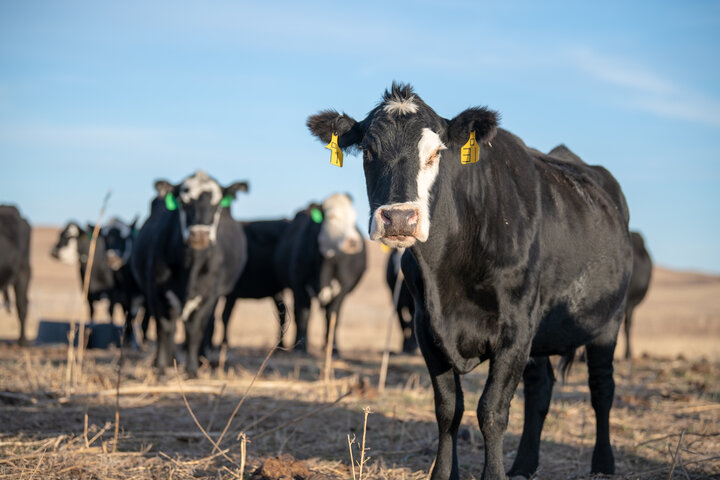When drought conditions are looming cow-calf producers may need to closely evaluate their herds to determine which animals should be culled due to the availability and price of pasture and rangeland and the prospects of tight hay supply. Having a depopulation plan allows you to market cows before the market is "flooded" with cull cows and price is reduced. If cow herd numbers need to be reduced or depopulation is the best alternative, consider the following:
- Only take cow/calf pairs to grass. Non-pregnant cows or cows that lost their calves at calving should be culled. Therefore, only cows that have the potential to wean a calf are turned out to pasture.
- Cull cows that have been identified as poor mothers, have unsound udders, teats, feet and legs, bad disposition, and other physical problems (early stages of cancer eye, etc.). Older cows that are being considered to be retained in the herd should be checked carefully to insure they have a sound mouth and are likely to sustain productivity for at least one or two years.
- Identify the productive and nonproductive females in your herd. Use your individual records kept on each cow to identify cows that have consistently weaned calves that rank in the bottom 10-25% of your herd. Go back to the last two to three years' of information collected and if a cow ranks low in both years or in all three years, they should be candidates for culling.
- Check cows for pregnancy as soon after the breeding season as possible. Experienced ultrasound technicians are about 100% accurate on a 30 to 35 day old fetus. Experienced rectal palpaters can detect pregnancy in cows where the fetus is between 45 and 60 days. Accuracy is critical as you do not want to sell a pregnant cow that was palpated as not pregnant.
- Evaluate the number of heifers that you need to keep for replacements. Although these heifers require less total feed than cows, they need higher quality feed because they still have a nutrient requirement for growth. In addition, if conditions exist during the summer where hay supply is reduced due to the dry conditions, higher quality feed is also needed for replacement heifers this fall and this hay may be expensive.
- There may be females in the herd that are suckling a calf but the intent for these females is to cull them after the calf is weaned. If the pasture and forage resources are limited, consider early weaning the calf at 45 to 90 days of age and selling the cow. Early weaned calves are efficient at converting feed to gain. It is more economical and efficient feed the calf directly than to feed the calf through feeding the cow during drought situations. Design a ration for the calf that is palatable, dust free, and cannot be sorted. Once the calf is weaned, the cow be culled or maintained on a lower quality ration, especially when the breeding season has been completed.
- If there are herd bulls that are not going to be part of the bull battery the following year, consider culling them soon after the end of the breeding season.
Selling only a few cull cows in a fiscal year will likely not have any tax implications. If a large number of cows are to be sold, then you may want to contact your Extension Management Specialist or your accountant to determine any tax implications.
Topics covered:
Reproduction & genetics, Genetics & selection, Selection & culling, Drought

